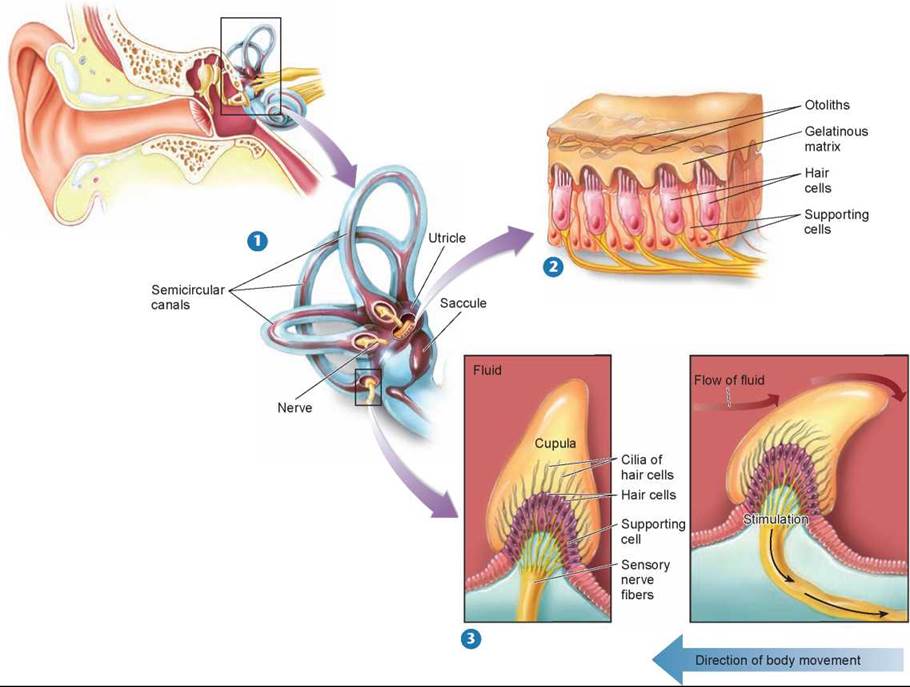THE LIVING WORLD
Unit Six. Animal Life
29. The Senses
29.2. Sensing Gravity and Motion
Two types of receptors in the ear inform the brain where the body is in three dimensions. This knowledge enables an animal to move freely and maintain its balance. Figure 29.4 shows the anatomy of the inner ear and the locations of these receptors.

Figure 29.4. How the inner ear senses gravity and motion.
1 The semicircular canals, the utricle, and the saccule, are part of the inner ear. 2 Enlargement of a section of the utricle or saccule. Otoliths embedded in the gelatinous matrix move in response to the pull of gravity. 3 The cupula within the semicircular canals are surrounded by fluid and contain hair cells. Movement in a particular direction causes fluid in the semicircular canal of that plane to move the cupula, stimulating the hair cells.
Balance. To keep the body’s balance the brain needs a frame of reference, and the reference point it uses is gravity. The sensory receptors that detect gravity are hair cells within the utricle and the saccule of the inner ear 1. The tips of the hair cells project into a gelatinous matrix with embedded particles called otoliths 2. To illustrate how these receptors work, imagine a pencil standing in a glass. No matter which way you tip the glass, the pencil rolls along the rim, applying pressure to the lip of the glass, which indicates the direction the glass is tipped. Similarly, otoliths in the utricle and saccule will shift in the matrix in response to the pull of gravity, stimulating hair cells, which the brain uses to determine vertical positioning.
Motion. The brain senses motion by employing a receptor in which fluid deflects cilia in a direction opposite that of the motion. Within the inner ear are three fluid-filled semicircular canals, each oriented in a different plane at right angles to the other two (1) so that motion in any direction can be detected. Protruding into the canal are groups of cilia from sensory cells. The cilia from each cell are arranged in a tentlike assembly called a cupula, shown in 3, which is pushed when fluid in the semicircular canals moves in a direction opposite that of the head’s movement. Because the three canals are oriented in all three planes, movement in any plane is sensed by at least one of them, and the brain is able to analyze complex movements by comparing the sensory inputs from each canal.
The semicircular canals do not react if the body moves in a straight line because the fluid in the canals does not move. That is why traveling in a car or airplane at a constant speed in one direction gives no sense of motion.
Key Learning Outcome 29.2. The body senses gravity and acceleration by the deflection of cilia caused by shifting otoliths or fluid. The body cannot sense motion at a constant velocity and direction.